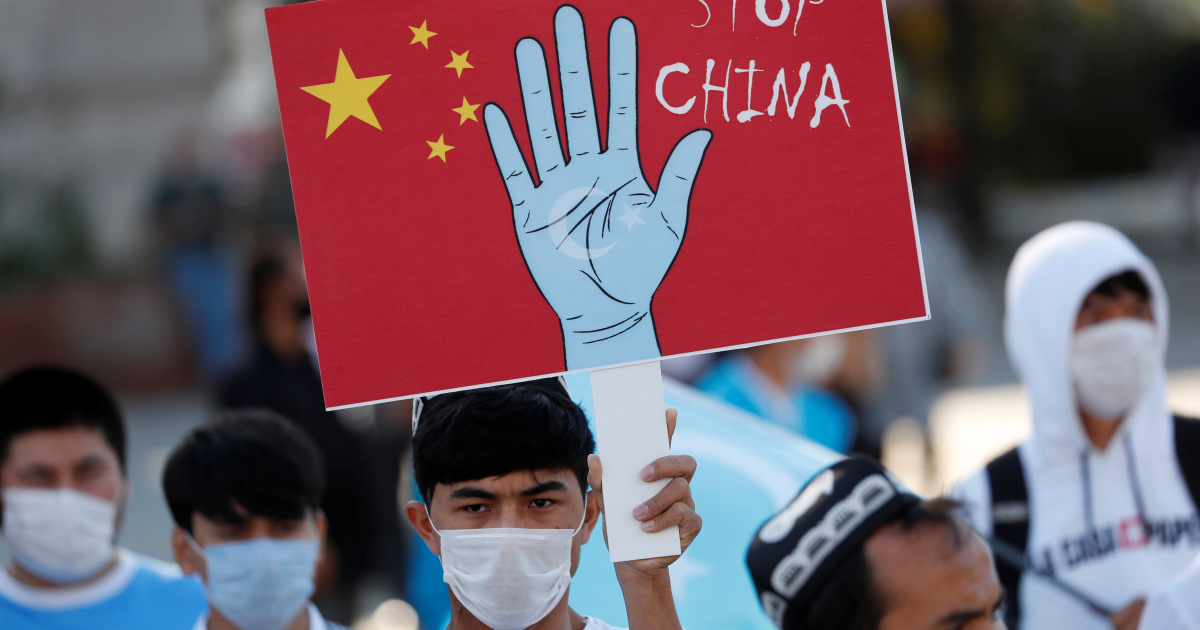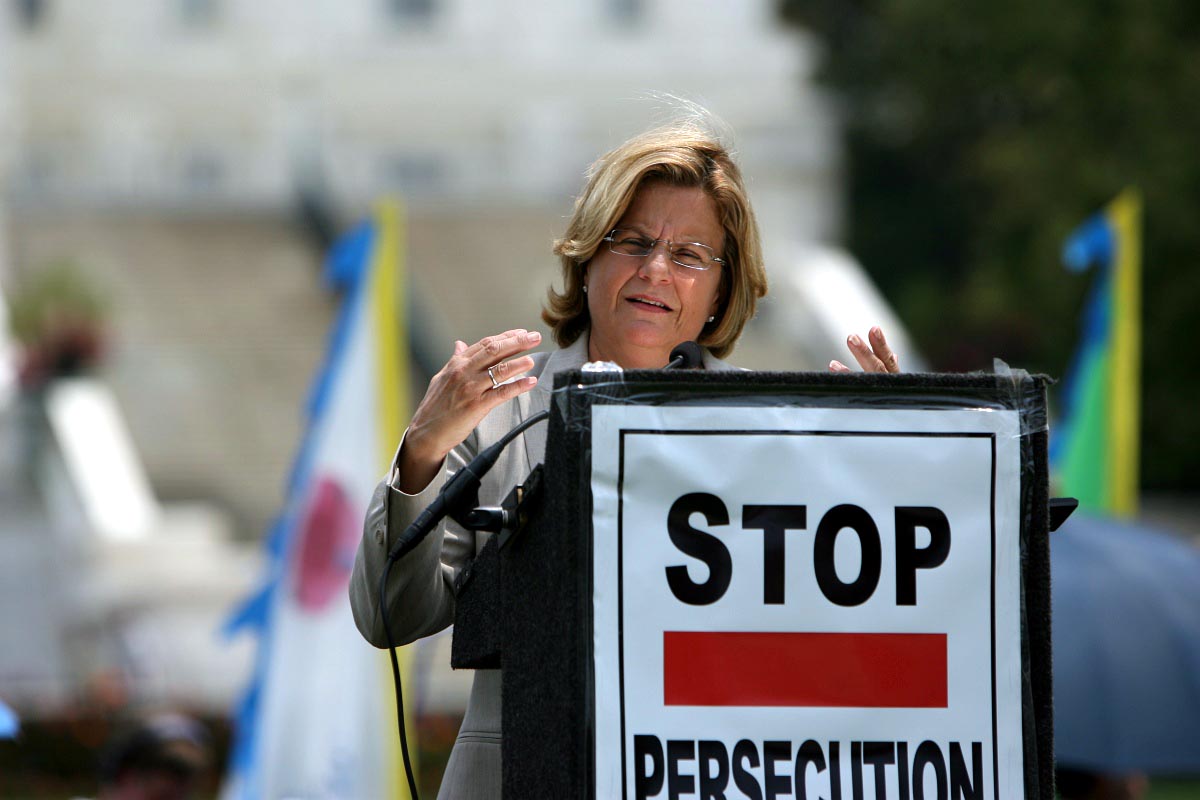The faux anti-imperialism of denying anti-Uighur atrocities
As evidence of the Chinese government’s atrocities against Uighur and other Turkic Muslims continues to mount – satellite images of concentration camps; leaked state blueprints for mass exploitation and internment; survivor testimony of disappearances, torture, and sexual abuse – so too do the political contradictions in the international response.
Not only do we have the United States and its allies decrying China’s human rights violations, and China and its allies denying such violations, and reminding the West of its own abuses of human rights, we now have a group of Western “anti-imperialists” siding with China simply because they feel whatever the US says is suspect, and therefore what China claims is not.
World leaders usually regarded as strong advocates for oppressed Muslims, such as Pakistan’s Prime Minister Imran Khan, have also signed on to what might be called the “Uighur Exception,” in order to avoid offending the Chinese government and jeopardising the development dollars on which they depend.
And so, the Uighurs are wronged four times over: by China’s oppression, by American imperialist cooptation, by left-wing denialism, and by Muslim leaders’ dereliction.
For the Trump administration, the Uighur’s plight was yet another card to play in its China-bashing, along with Hong Kong and COVID-19. In a remarkable reversal, Trump went from lauding mass Uighur internment as the “right thing to do” to labelling it as genocide – all while implementing a Muslim ban and incarcerating thousands of migrants in a vast “concentration camp” system of the US’s own. Behind the facade of Trump’s transparently Sinophobic theatrics, US companies continued to deploy Chinese surveillance technology developed in the laboratory of Uighur repression.
Current US President Joe Biden has maintained the bipartisan consensus in accusing China of genocide – having previously served as vice president in the Obama administration, a pioneer in the preemptive collective criminalisation of Muslim communities in the name of counter-radicalisation.
Even one-time anti-Uighur agitators like former House Speaker Newt Gingrich have joined the bandwagon of performative allyship with the Uighurs against China’s “modern genocide.” What a change in tune from 2009, when Gingrich denigrated the Uighurs as misogynists, “trained mass killers,” and “terrorists,” cheering their wrongful capture and torture by the US at Guantanamo Bay.
In contrast to this fickle and self-serving “solidarity” from American political leaders, scholars and human rights organisations have long been consistent in exposing and opposing China’s persecutory policies against the Uighurs, even when conflicting with the American empire’s realpolitik.
Amnesty International’s first report (PDF) on atrocities against the Uighurs is from 1992, documenting a “pattern of human rights violations [that] appears to have emerged in Xinjiang since 1989,” including secret detentions, extrajudicial executions, and suppression of religious expression.
Human Rights Watch has been calling on the US government to press China on its treatment of the Uighurs since 1998, in the face of then-President Bill Clinton’s reticence for the sake of augmenting US-China trade.
And in the midst of the “war on terror” mania in 2004, Georgetown University Xinjiang specialist James Millward authoritatively deconstructed China’s sensationalist and unsubstantiated projections of the Uighur “terrorist” threat – the basis of the US’s designation of the Uighur group East Turkestan Islamic Movement (ETIM) as a terrorist organisation in 2002 to woo the Chinese government’s support for the illegal invasion of Iraq.
Yet some sections of the left continue to dismiss reports of China’s atrocities as an American imperialist ploy, concocting mountains of sand in which to bury their “anti-imperial” heads.
The most steadfast bastion of denialism has been the Grayzone, which describes itself as “an independent news website dedicated to original investigative journalism and analysis on politics and empire.” Their modus operandi is to focus primarily on discrediting some prominent messengers calling attention to the Uighur’s persecution while leaving the vast body of evidence behind the message largely untouched.
Much of this evidence emanates from within the Chinese state apparatus itself. This includes:
Rather than disavowing these practices, Chinese state outlets have attempted to justify them – “justifications” uncritically reproduced in analyses by Grayzone journalists. Mass internment is pitched as “countering terrorism and extremism.” Imprisoned Uighur academics are cast as alleged promoters of “separatism” and “violent militancy” – no proof provided. Forced labour programmes are explained away as “poverty reduction”. Evidence of coercive sterilisation is packaged as “family planning” and “free healthcare.” Child separation is chalked up to “abandonment” by “irresponsible parents”.
When it comes to smearing Uighurs, temporal incoherence is no obstacle: For instance, the East Turkestan Islamic Movement is blamed in the Grayzone for “terrorist” attacks starting in 1990 – eight years before the group’s alleged founding. Some Xinjiang experts continue to doubt whether it ever existed as a cogent organisation at all.
Political incoherence is likewise no bar: The Newlines Institute – which recently published a report arguing that the persecution of the Uighurs meets the international definition of genocide – is accused by the Grayzone of being in bed simultaneously with the unlikely threesome of the CIA, the Israel lobby, and the Muslim Brotherhood. The Newlines genocide report was produced in consultation with eminent legal experts including Director of the International Bar Association’s Human Rights Institute Helena Kennedy, Director of the Human Rights Research and Education Centre John Packer, and past President of the International Criminal Court Bar Association Charles Taku.
While indicting those they criticise as American imperialist stooges, the Grayzone itself readily uses sources generated from within the very belly of the American empire, as long as they serve to prop up the story of the Uighur menace.
The historically CIA-friendly Thai national police, for instance, and US government terrorist entity listings – infamous for also criminalising Palestine liberation movements – are cited as authoritative proof of the Uighur terrorist threat.
Meanwhile, Uighurs supporting the victims of American counterterrorism – such as Rushan Abbas, whose work as an interpreter for Uighur Gitmo captives helped “mitigate the brutal effects of the ‘war on terror’,” in the words of critical investigative journalist Andy Worthington – are impugned.
Channelling Newt Gingrich on the Uighurs circa 2009, yesterday’s imperialism is apparently today’s “anti-imperialism.”
Even some of the Grayzone’s own selectively quoted sources seriously undermine its desired narrative. For example, an Associated Press story cited by the Grayzone to demonstrate the danger of Uighur militancy in fact describes such militancy as the “self-fulfilling prophecy” of “Chinese oppression”. The piece begins with an account of the torture of a Uighur man by Chinese police.
Similarly, historian Linda Benson’s book on the Uighur Ili Rebellion of 1944-1949 – from which the Grayzone extracted an anecdote depicting Uighurs as misogynists – clearly explicates in its introduction: “Chinese policies in Xinjiang served to increase local antipathy among Muslims towards the Han Chinese and, inadvertently, to foster [Uighur] nationalism … The core of Chinese policy continued to be military and political domination by the Han Chinese minority.”
The current onslaught against the Uighurs is the continuation of a long history of settler colonisation, political domination, resource extraction, and geopolitical exploitation – now conducted, since 9/11, under the aegis of a “people’s war on terror.”
Far from being a recently-manufactured artefact of American manipulation, as the Grayzone and other denialists suggest, Uighur opposition to Chinese state rule is as old as the imposition of this rule itself. Independent Uighur states were declared in 1865, 1933, and 1944. By reducing the Uighurs to little more than Great Power pawns, with no autonomous politics or liberation aspirations of their own, some “anti-imperialists” reproduce the imperial hegemony they rail against.
“The upheaval in Xinjiang,” Benson writes, “was similar to that of other colonial or ‘subject’ people who were contained within larger political entities … what are today referred to as national liberation struggles.” China’s very name for the Uighur homeland, Xinjiang, literally means “new frontier.”
The narratives deployed to delegitimise the Uighurs’ struggle echo those of other settler-colonial regimes, from the Americas to Palestine to Kashmir: denying Indigenous history; dehumanising Indigenous peoples as “underdeveloped,” “uncivilised,” and “terrorists;” disguising settler sovereignty as benevolent, and demonising Indigenous resistance as the source of violence rather than the response.
In its subjugation and assimilation of the Uighur homeland, China’s policies aren’t the antithesis of Western coloniality, but its mirror image. China’s own Foreign Minister has stated that its “war on terror” practices against the Uighurs “are no different from those in the UK, France and the US.” Many of the same corporate profiteers reaping the spoils of American imperialism – such as Haliburton, Exxon, McKinsey, Microsoft, Amazon, and Blackwater founder Erik Prince – have also profited from the Chinese version in Xinjiang.
Trapped between China’s abusive assimilationism, American political opportunism, and left-wing denialism, it is the Uighurs who are suffering. Abandoning them is not anti-imperialism, but the imperial politics of disposability by another name.
The views expressed in this article are the authors’ own and do not necessarily reflect Al Jazeera’s editorial stance.











